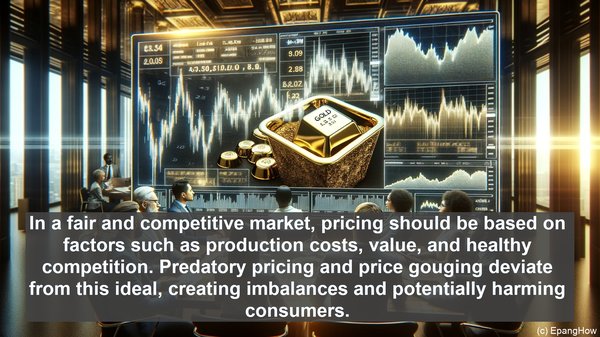Introduction: The Pricing Landscape
Hello everyone! Welcome to today’s article. Pricing is a fundamental aspect of any business, and various strategies are employed to maximize profits. However, some tactics can raise ethical and legal concerns. Two such strategies are predatory pricing and price gouging. Although they both involve pricing, they differ significantly in their intent and consequences.
Predatory Pricing: A Strategic Move
Predatory pricing refers to a deliberate strategy employed by a company to drive competitors out of the market. The idea is to set prices so low that other businesses find it impossible to match them. While this may seem like a win for consumers initially, the long-term consequences can be detrimental. Once the competition is eliminated, the company can raise prices, often to a level higher than before, effectively monopolizing the market. This can lead to reduced choices for consumers and potentially higher prices in the long run.
Price Gouging: Exploiting Vulnerability
Price gouging, on the other hand, occurs during times of crisis or increased demand. It involves significantly increasing the prices of essential goods or services. The intent here is to capitalize on the urgency or desperation of consumers, often in situations where alternatives are limited. While the immediate impact is higher profits for the seller, it can have severe consequences for the affected individuals. Price gouging is often met with public outrage and is subject to legal action in many jurisdictions.

Legal and Ethical Implications
Both predatory pricing and price gouging have legal and ethical implications. Predatory pricing can be seen as anti-competitive behavior, and many jurisdictions have laws in place to prevent it. Price gouging, on the other hand, is often explicitly prohibited during emergencies or crises. Ethically, both strategies are viewed negatively as they exploit market conditions for personal gain, often at the expense of consumers.

